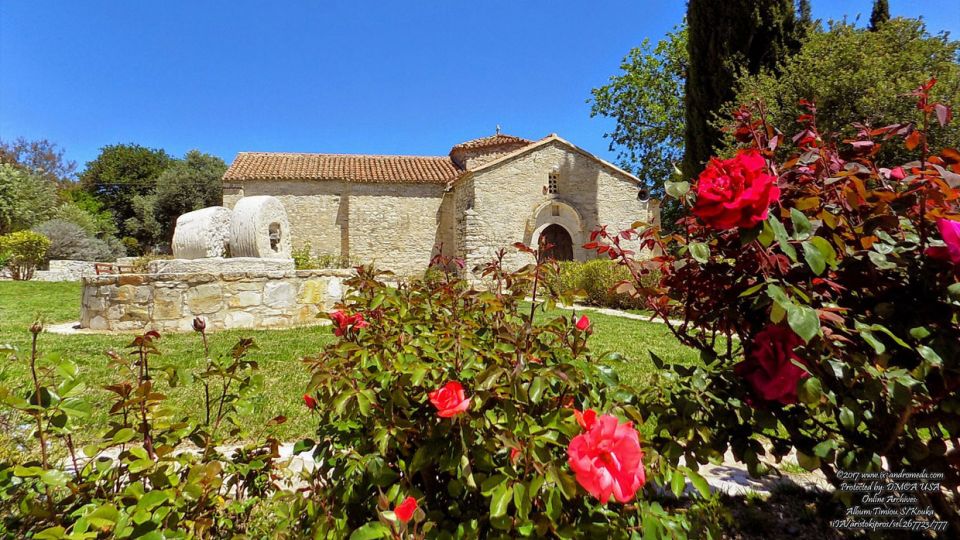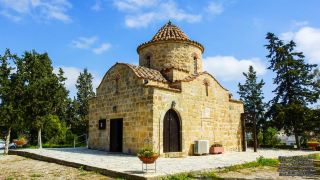At the beginning of the 4th century A.D., a ship that carried Agia Eleni from the Holy lands in Constantinople, embarked at the mouth of the river Tetios, that was found in the perimeter of the village of Kalavasos. Later on, this river was called “Vasilikos” (Royal), due to this incident.
Upon stepping her foot on dry land, the Saint went towards the far east mountain of Troodos, on the peak of which the ruins of the Aisle of Goddess Aphrodite were found.
She built a Monastery in its place and gave a part of the Holy Wood that she brought with her. She called this mountain “Stavrovouni”.
She carried on to the highest mountain peak of the chain of mountains having the name of “Olympos”, where ruins of the Temple in the honour of Goddess Aphrodite were found. Upon arriving in the area, she realised that it was a very inaccessible and isolated area, that was covered in snow for many months. As she was looking for an adequate place to build a new Church, she reached the area of the village of Kouka, which was found at a lower altitude and had a milder and cooler climate.
In Kouka, she built a Monastery and donated 3 crosses out of the Holy Wood to it. From Kouka, she carried on to the village that is known today as “Omodos”, where she also built a Monastery. The name of the village came from the crosstalk she had with the person responsible for her security, who did not agree with her being present at places as wild and as unwelcoming as this one. She replied to him “Omou Odeue” (Come with me), and ever since, the area was called “Omodos”.
The monastery that was built by Agia Eleni in Kouka, was destroyed, and later on in the same location, the new Monastery and the new Church were built. The only construction still saved today is the Church of Timios Stavros. It is a construction dated in the 12th century, and it has a form of a free cross, while in its centre, instead of a dome, it has a gothic groin vault.




